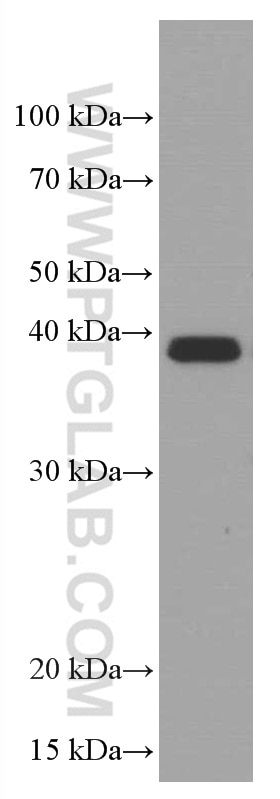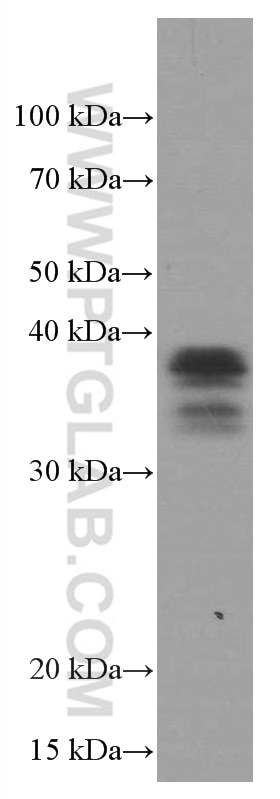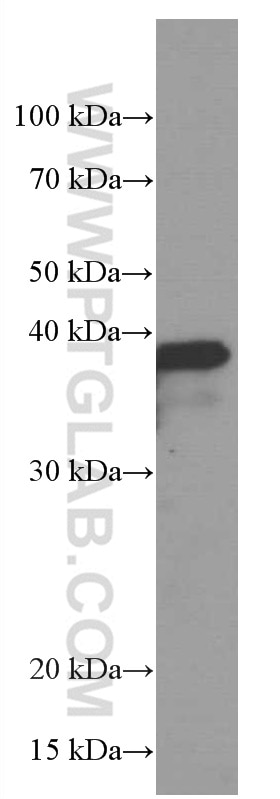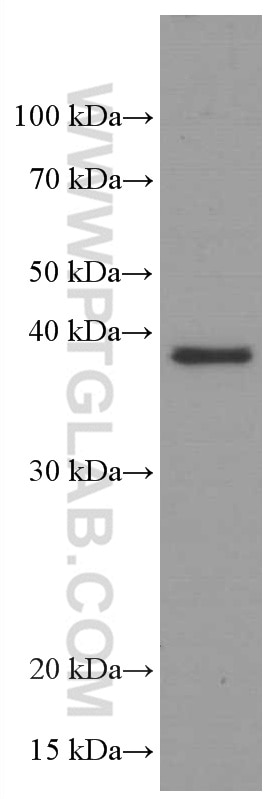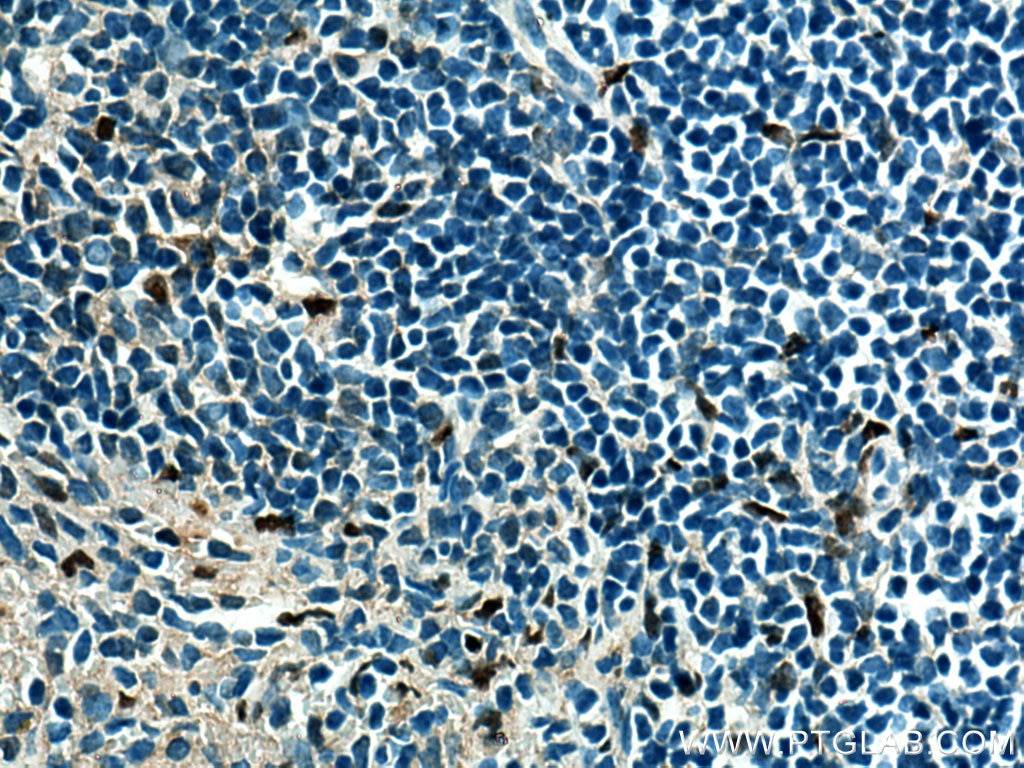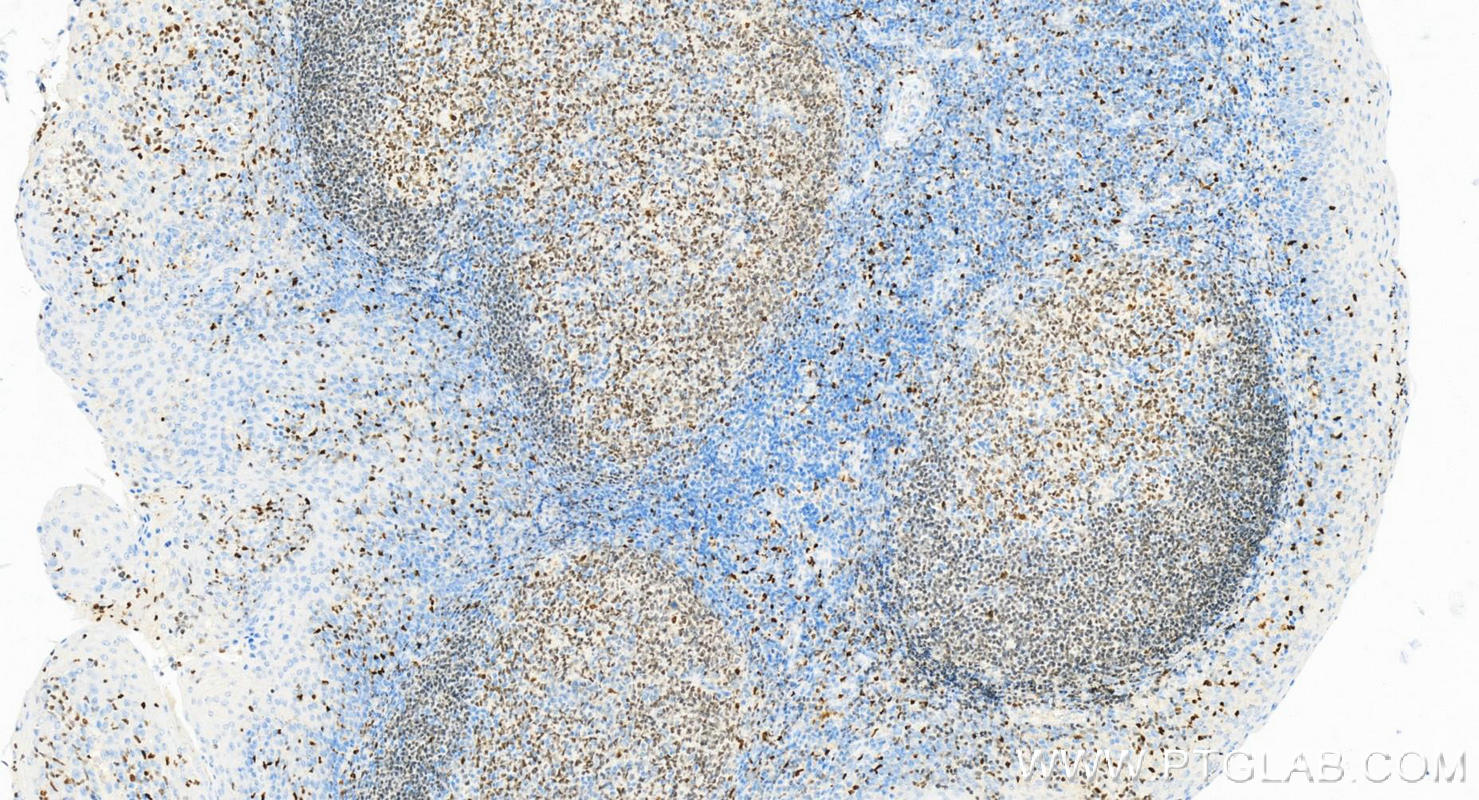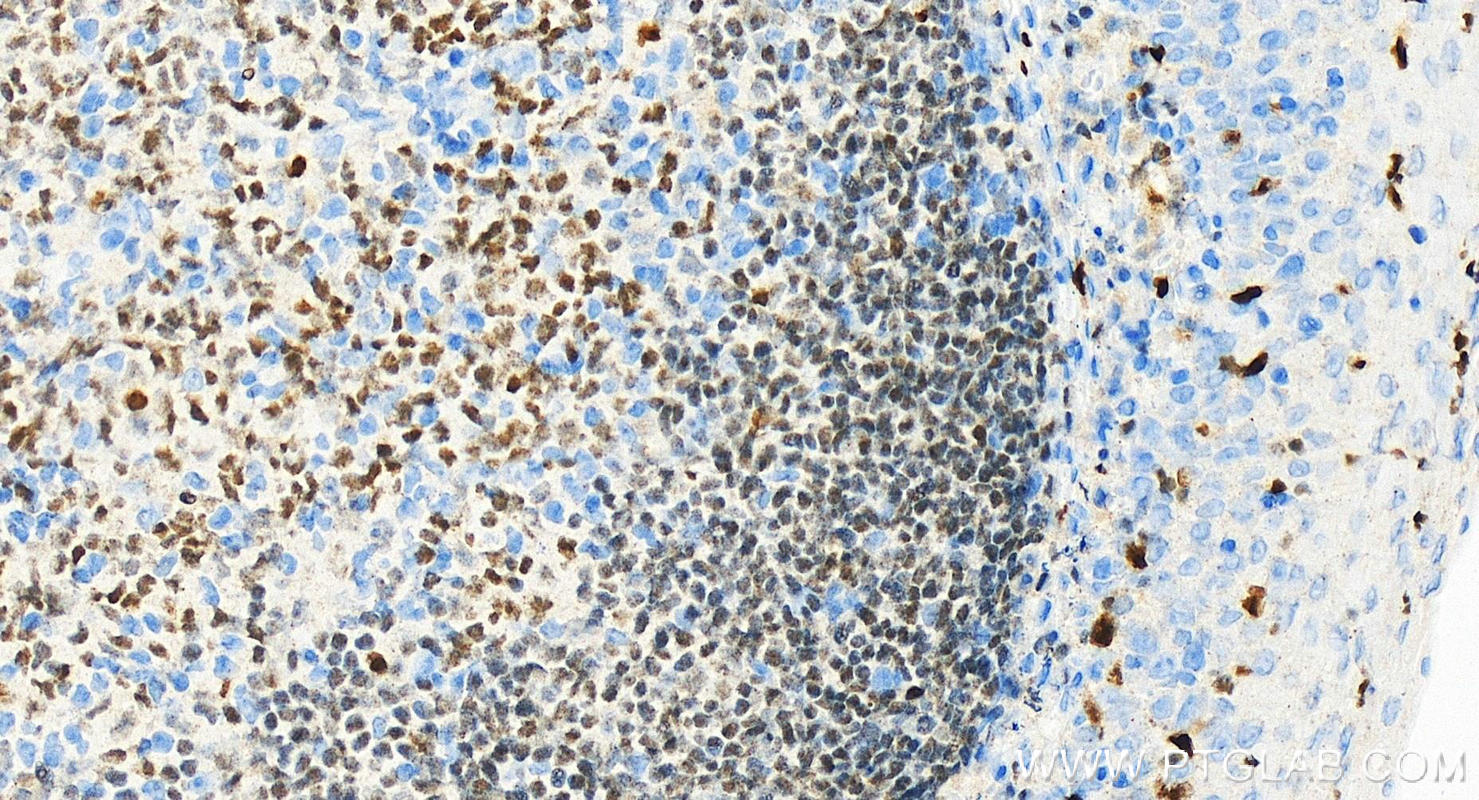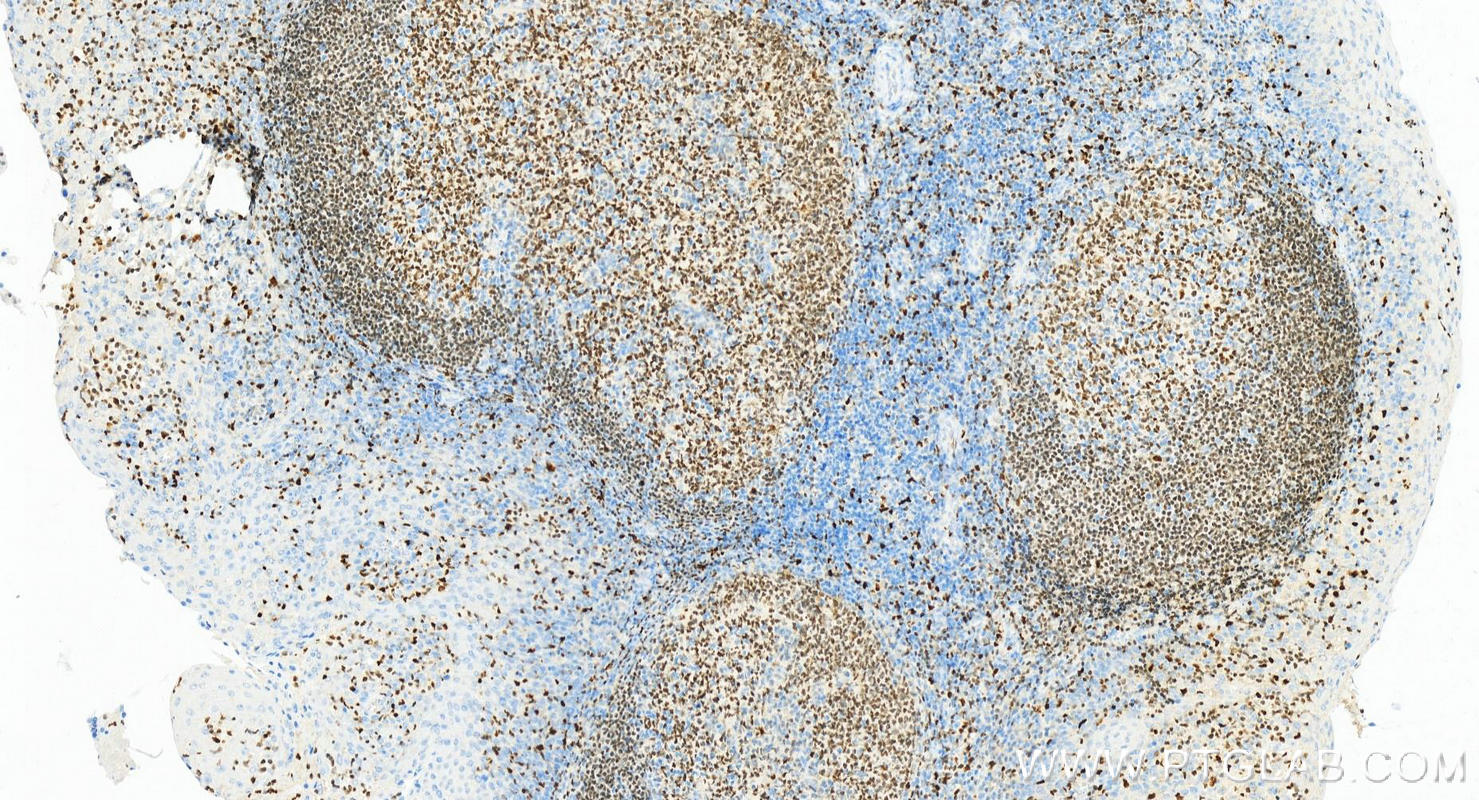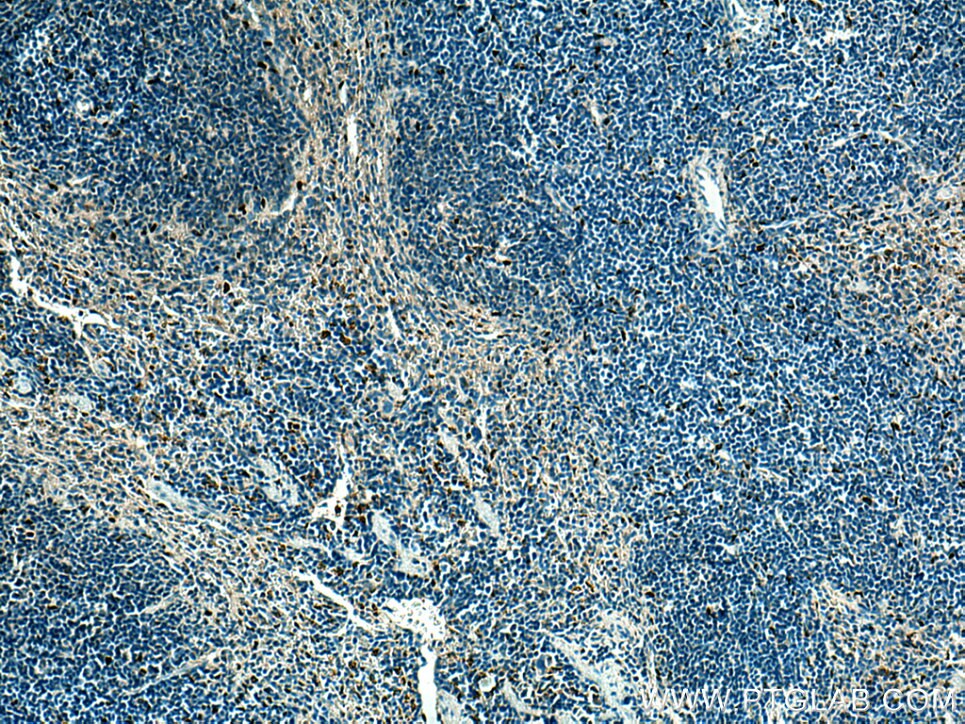SPI1 Monoklonaler Antikörper
SPI1 Monoklonal Antikörper für WB, IHC, ELISA
Wirt / Isotyp
Maus / IgG1
Getestete Reaktivität
human, Maus, Ratte
Anwendung
WB, IHC, IF, CoIP, ELISA
Konjugation
Unkonjugiert
CloneNo.
2H3D3
Kat-Nr. : 66618-2-Ig
Synonyme
Geprüfte Anwendungen
| Erfolgreiche Detektion in WB | Daudi-Zellen, Raji-Zellen, Rattenmilzgewebe, RAW 264.7-Zellen |
| Erfolgreiche Detektion in IHC | humanes Tonsillitisgewebe, Mausmilzgewebe Hinweis: Antigendemaskierung mit TE-Puffer pH 9,0 empfohlen. (*) Wahlweise kann die Antigendemaskierung auch mit Citratpuffer pH 6,0 erfolgen. |
Empfohlene Verdünnung
| Anwendung | Verdünnung |
|---|---|
| Western Blot (WB) | WB : 1:2000-1:10000 |
| Immunhistochemie (IHC) | IHC : 1:2000-1:8000 |
| It is recommended that this reagent should be titrated in each testing system to obtain optimal results. | |
| Sample-dependent, check data in validation data gallery | |
Veröffentlichte Anwendungen
| WB | See 4 publications below |
| IHC | See 3 publications below |
| IF | See 2 publications below |
| CoIP | See 1 publications below |
Produktinformation
66618-2-Ig bindet in WB, IHC, IF, CoIP, ELISA SPI1 und zeigt Reaktivität mit human, Maus, Ratten
| Getestete Reaktivität | human, Maus, Ratte |
| In Publikationen genannte Reaktivität | human, Maus |
| Wirt / Isotyp | Maus / IgG1 |
| Klonalität | Monoklonal |
| Typ | Antikörper |
| Immunogen | Peptid |
| Vollständiger Name | spleen focus forming virus (SFFV) proviral integration oncogene spi1 |
| Berechnetes Molekulargewicht | 31 kDa |
| Beobachtetes Molekulargewicht | 32-38 kDa |
| GenBank-Zugangsnummer | NM_003120 |
| Gene symbol | SPI1 |
| Gene ID (NCBI) | 6688 |
| Konjugation | Unkonjugiert |
| Form | Liquid |
| Reinigungsmethode | Protein-G-Reinigung |
| Lagerungspuffer | PBS with 0.02% sodium azide and 50% glycerol |
| Lagerungsbedingungen | Bei -20°C lagern. Nach dem Versand ein Jahr lang stabil Aliquotieren ist bei -20oC Lagerung nicht notwendig. 20ul Größen enthalten 0,1% BSA. |
Hintergrundinformationen
SPI1, also named as 31 kDa-transforming protein, is a 270 amino acid protein, which belongs to the ETS family. SPI1 is highly expressed in both FV-P and FV-A-induced erythro-leukemia cell lines that have undergone rearrangements of the SPI1 gene due to the insertion of SFFV.
Protokolle
| PRODUKTSPEZIFISCHE PROTOKOLLE | |
|---|---|
| WB protocol for SPI1 antibody 66618-2-Ig | Protokoll herunterladen |
| IHC protocol for SPI1 antibody 66618-2-Ig | Protokoll herunterladenl |
| STANDARD-PROTOKOLLE | |
|---|---|
| Klicken Sie hier, um unsere Standardprotokolle anzuzeigen |
Publikationen
| Species | Application | Title |
|---|---|---|
J Immunother Cancer SPI1+CD68+ macrophages as a biomarker for gastric cancer metastasis: a rationale for combined antiangiogenic and immunotherapy strategies | ||
Acta Pharmacol Sin PU.1/Spi1 exacerbates ischemia-reperfusion induced acute kidney injury via upregulating Gata2 and promoting fibroblast activation | ||
Pathol Res Pract INHBA, transcriptionally activated by SPI1, facilitates gastric cancer progression by inducing macrophage recruitment and M2 polarization via activating the TGF-β signaling to increase CCL2 | ||
Discov Oncol SPI1 is a prognostic biomarker of immune infiltration and immunotherapy efficacy in clear cell renal cell carcinoma | ||
Cancers (Basel) ACAP1 Deficiency Predicts Inferior Immunotherapy Response in Solid Tumors | ||
Exp Cell Res IRF1 suppresses colon cancer proliferation by reducing SPI1-mediated transcriptional activation of GPX4 and promoting ferroptosis |
